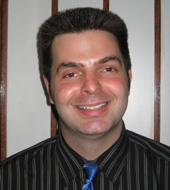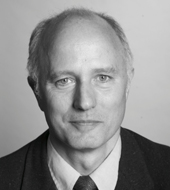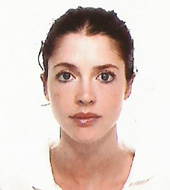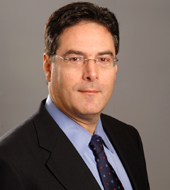Resumo
Definição
História e exame físico
Principais fatores diagnósticos
- presença de fatores de risco
- obsessões
- compulsões
- fenômenos sensoriais
- transtorno de personalidade esquizotípica
- transtorno de tique
- coordenação motora reduzida
- dificuldades sensório-perceptivas
- dificuldades no sequenciamento de tarefas motoras complexas
Outros fatores diagnósticos
- sexo masculino
Fatores de risco
- história familiar de transtorno obsessivo-compulsivo (TOC)
- PANDAS/PANS (transtornos neuropsiquiátricos pediátricos autoimunes associados a infecções estreptocócicas/síndrome neuropsiquiátrica pediátrica de início agudo)
- gestação
- sexo masculino (início mais cedo, evolução mais crônica e resistência ao tratamento)
- maior frequência das compulsões (resistência ao tratamento)
- idade precoce de início (resistência ao tratamento)
- hospitalizações anteriores por transtorno obsessivo-compulsivo (TOC [resistência ao tratamento])
- transtorno de personalidade esquizotípica (resistência ao tratamento)
- transtorno de tique (resistência ao tratamento)
- anormalidades estruturais do cérebro específicas ou difusas (resistência ao tratamento)
Investigações diagnósticas
Primeiras investigações a serem solicitadas
- nenhum exame inicial
Investigações a serem consideradas
- Entrevista Clínica Estruturada do DSM (SCID)
- Escala de Sintomas Obsessivo-Compulsivos de Yale-Brown (Y-BOCS)
- Impressão clínica global (CGI)
Algoritmo de tratamento
sintomas leves a moderados: sem transtornos de personalidade comórbidos ou sintomas dissociativos
sintomas graves ou com transtornos de personalidade comórbidos ou sintomas dissociativos
Colaboradores
Autores
Phillip J. Seibell, MD, FAPA

OCD and Anxiety Psychiatry of Westchester, P.C.
Hawthorne
NY
Declarações
PJS declares that he has no competing interests.
Stefano Pallanti, MD, PhD

Professor of Psychiatry
Institute of Neuroscience
Florence
Italy
Declarações
SP declares that he has no competing interests. SP is an author of several references cited in this topic.
Silvia Bernardi, MD

Project Manager
New York State Psychiatric Institute
Columbia University
New York
NY
Declarações
SB receives research sponsorship from NYSPI, APA, and the Brain & Behavior Research Foundation. SB is also a board member of the New York council on Problem Gambling. SB is an author of a reference cited in this topic.
Megan Hughes-Feltenberger, PhD

Clinical Assistant Professor of Psychology in Psychiatry
Weill Cornell Medicine
New York
NY
Declarações
MHF declares that she has no competing interests.
Eric Hollander, MD

Clinical Professor of Psychiatry and Behavioral Sciences
Director
Compulsive, Impulsive and Autism Spectrum Disorder Program
Albert Einstein College of Medicine
Montefiore Medical Center
New York
NY
Declarações
EH has received research grants from Jazz, Roche, and Compass.
Agradecimentos
The authors would like to gratefully acknowledge Dr Ashley Braun, a previous contributor to this topic. AB declares that she has no competing interests.
Revisores
Darin D. Dougherty, MD
Director
Division of Neurotherapeutics
Massachusetts General Hospital
Boston
MA
Declarações
DDD has received research funding and honoraria from Medtronic. DDD has served as an advisor and received honoraria from Sage, Celenase, and Boehringer-Ingelheim. DDD has served as an advisor and received equity from Neurable, Innercosmos, and Intrinsic Powers.
Robert Hudak, MD
Associate Professor of Psychiatry
University of Pittsburgh School of Medicine
Pittsburgh
Pennsylvania
PA
Declarações
RH declares that he has no competing interests.
Juliana Belo Diniz, MD
Psychiatrist
Department and Institute of Psychiatry
Clinical Hospital
University of Sao Paulo Medical School
Sao Paulo
Brazil
Declarações
JBD declares that she has no competing interests.
Amit Nigam, MBBS, MRCPsych
Specialist Registrar in Forensic Psychiatry and Honorary Research Worker
National OCD Service
Queen Elizabeth II Hospital
Welwyn Garden City
Forensic Psychiatrist
West London Mental Health NHS Trust
London
UK
Declarações
AN declares that he has no competing interests.
Créditos aos pareceristas
Os tópicos do BMJ Best Practice são constantemente atualizados, seguindo os desenvolvimentos das evidências e das diretrizes. Os pareceristas aqui listados revisaram o conteúdo pelo menos uma vez durante a história do tópico.
Declarações
As afiliações e declarações dos pareceristas referem--se ao momento da revisão.
Referências
Principais artigos
American Psychiatric Association. Diagnostic and statistical manual of mental disorders, 5th edition, text revision (DSM-5-TR). Washington, DC: American Psychiatric Publishing; 2022.
World Health Organization. International statistical classification of diseases and related health problems. 11th revision. Jan 2022 [internet publication].Texto completo
American Psychiatric Association. Practice guideline for the treatment of patients with obsessive-compulsive disorder. Jul 2007 [internet publication].Texto completo
American Psychiatric Association. Guideline watch (March 2013): practice guideline for the treatment of patients with obsessive-compulsive disorder. Mar 2013 [internet publication].Texto completo
Artigos de referência
Uma lista completa das fontes referenciadas neste tópico está disponível para os usuários com acesso total ao BMJ Best Practice.
Diagnósticos diferenciais
- Transtorno de personalidade obsessivo-compulsivo (TPOC)
- Transtorno dismórfico corporal (TDC)
- Transtorno de sintomas somáticos
Mais Diagnósticos diferenciaisDiretrizes
- Guidelines for the pharmacological treatment of anxiety disorders, obsessive-compulsive disorder and posttraumatic stress disorder in primary care
- Diagnostic and statistical manual of mental disorders, fifth edition, text revision (DSM-5-TR)
Mais DiretrizesFolhetos informativos para os pacientes
Transtorno obsessivo-compulsivo
Mais Folhetos informativos para os pacientesConectar-se ou assinar para acessar todo o BMJ Best Practice
O uso deste conteúdo está sujeito ao nosso aviso legal